CRO for Local Search: Concept and Strategies
“Last year, we saw a remarkable shift where 30% of our online orders found their way to fulfillment through our extensive network of over 1,350 physical stores. Quite a change from just a couple of years back,” noted Cherie Yates, Search Manager at Ulta Beauty.
Interestingly, Ulta Beauty isn’t standing alone in this trend. The numbers for in-store shopping soared to a staggering 1 trillion dollars.
It appears that in the post-COVID era, people are stepping out to local shops. But here’s the digital twist – before hitting the pavement, 2 out of 3 American consumers are firing up their devices and typing something like “XYZ near me” in search of the perfect shop and product combo. (Quote and stats from holiday shopping insights by Think with Google)
This means that for businesses with brick-and-mortar stores, it’s high time to focus on conversion rate optimization (CRO) for local search and enhance the customer journey for local customers. You wouldn’t want the majority of consumers searching for the products you sell and not finding your store or visiting your website only to drop off.
In this blog post, we’ll delve into the concept of CRO for local search. You will also get to read some tips to elevate your strategy and learn how to leverage VWO for effective optimization. Let’s get started!
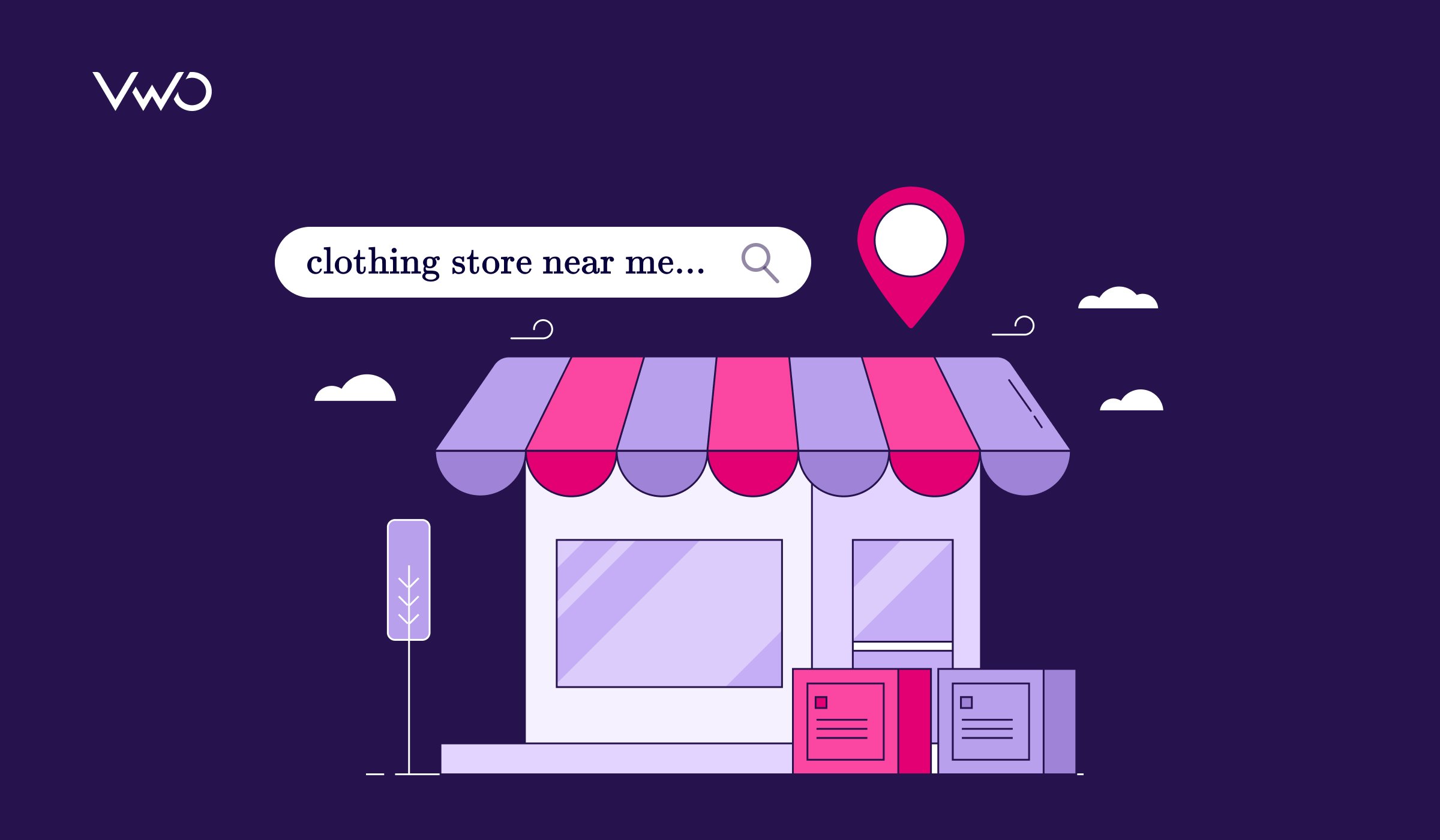
What is conversion rate optimization for local search?
The typical customer journey for local search usually kicks off with typing in casual queries like “near me”, or “best XYZ store in the city”. Alternatively, individuals may explore online directories. From there, it’s all about sifting through ratings and reviews, ultimately shortlisting businesses with the highest number of positive reviews and favorable reviews.
Following this, they may choose to either visit the website or get directions to the store. When on the website, the usual practice is to seek additional information about the business before taking desired action such as completing a form, scheduling a call, or any other desired conversion method as outlined by the business.
CRO for local search starts with dissecting the customer journey mentioned earlier. It involves identifying any leaks in the conversion process and then implementing targeted campaigns to enhance it. Picture it like a detective story for your business – finding the weak points and strengthening them.
For instance, you might launch an SEO campaign aimed at boosting ratings, ensuring that positive experiences are prominently showcased. Simultaneously, improving the website’s user interface becomes crucial – making it a smooth and engaging experience for visitors. A/B testing different versions of the homepage is another smart move, figuring out what resonates best with your local audience.
In the world of local search, CRO is about understanding the journey, plugging any leaks, and fine-tuning each step to turn potential customers into happy patrons. Now, let’s delve into some effective strategies to inspire and elevate your local search CRO efforts.
Strategies to implement for local search CRO
a. Run campaigns to get more reviews as part of local SEO optimization
When a potential customer searches for your business or service in their city—say, by entering “Top salons in Akron”— they receive local search results of Google business profiles of salons with the best ratings and the highest number of reviews are prominently featured in the list.
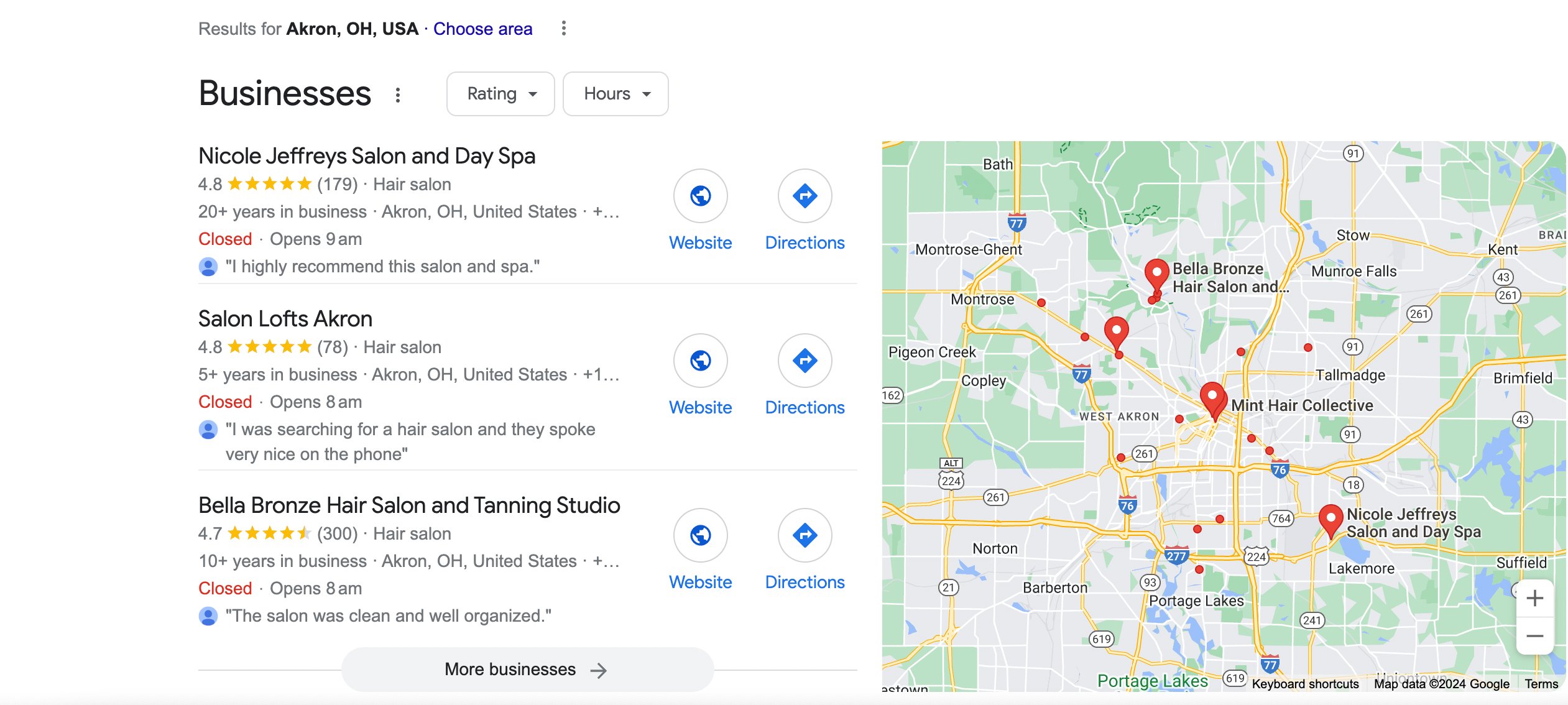
Therefore, for a business aiming to excel in local search, it’s crucial to prioritize the accumulation of positive reviews and high ratings. To kickstart this process, consider implementing the following strategies:
i. Offer incentives
Provide coupons or discount vouchers for future purchases as a reward for customers who share a review or rating. This not only encourages feedback but also builds customer loyalty.
ii. Digital prompting
Apart from face-to-face requests to share a review, you can ask customers for their contact information during the transaction. Then, you can follow up with emails or messages, kindly requesting them to share their experience through reviews or ratings.
iii. Contests and draws
Engage your audience by running contests. Encourage participation by asking people to share their experiences for a chance to enter a lucky draw. This not only boosts reviews but also creates a sense of excitement among customers.
These are simple steps to kickstart your efforts. But is it all worth it? Let me share a compelling case study that illustrates the reasons to invest in this endeavor.
Ted’s Montana Grill, an American restaurant chain, discovered that a staggering 92% of their potential customers relied on online reviews to inform their decisions when choosing a local outlet. This significant statistic underscores the importance for any company to pay attention.
To enhance the local conversion rate, the team collaborated with a customer acquisition tool to monitor and respond to reviews across 41 Ted’s Montana Grill locations, spanning 466 online listings and business pages. A dedicated team of 61 employees oversaw review tracking for these restaurant locations and online pages.
The company implemented a multi-pronged approach to encourage customer reviews, utilizing channels such as email, SMS, in-store kiosks, printed receipts, QR codes, and online landing pages. An example of the email communication sent to customers is shown below.
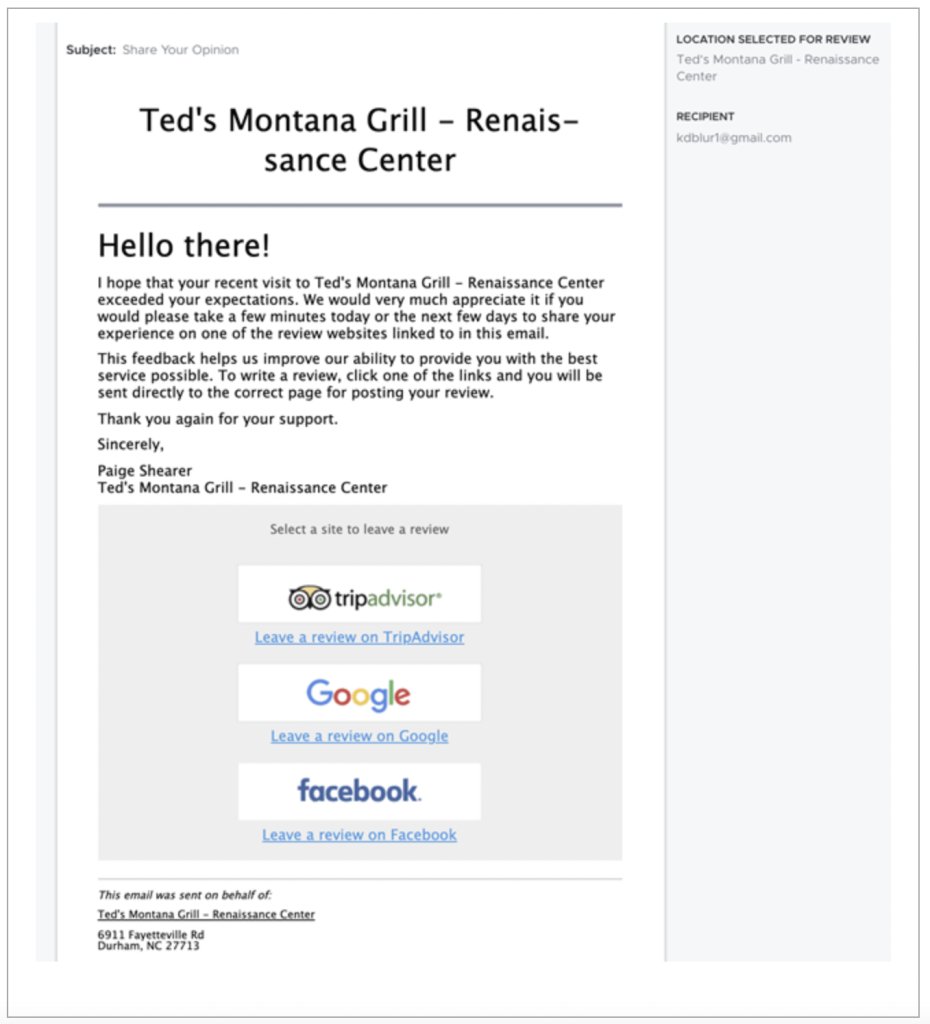
This concerted effort resulted in an impressive 60,000+ reviews within six months. This not only optimized their local search presence but also provided valuable insights for the corporate team to identify locations requiring attention and enhance their overall operations. This case study on local SEO best practices underscores that gathering positive reviews and ratings is crucial not only for small businesses but also for large corporations.
By prioritizing customer feedback and employing strategies to encourage reviews, companies can enhance their local search visibility, foster customer loyalty, and ultimately drive more conversions.
b. Customize website landing page experience for local search
The heart of a potential customer’s local search intent lies in understanding the business’s relevance to the locals and how it is perceived by others in the city or area. Therefore, it is crucial to customize the page experience to be exclusively relevant to the local audience. Here are some effective ways to achieve this:
i. Build trust with testimonials and reviews
Add testimonials and reviews directly on the landing page to instill trust. Consider incorporating a widget that prominently displays ratings and reviews received.
ii. Localize your copy
Craft the copy of the landing page using local keywords and phrases. This creates a sense of familiarity for visitors, making them feel more connected to your business.
iii. Highlight local initiatives
Showcase your conducted events in the city through a dedicated section featuring carousel photos. This visual representation emphasizes your local presence and involvement.
iv. Quantify local impact
To further build trust, provide statistics on the number of clients served in the city, if data is available. Highlighting your local impact adds credibility and reinforces your commitment to the community.
A stellar example of a global brand optimizing its website for local search is Nike. The keyword “Nike NYC,” a popular local search term in New York, garners thousands of searches monthly. In response, Nike has tailored the visitor experience with a dedicated landing page for this specific query.
Upon visiting the page, the first fold features an image of New Yorkers running with Nike gear on a local street. The accompanying copy promotes a reward program exclusive to the city, creating immediate interest and showcasing the brand’s impact on the local community. This approach not only caters to the local audience but also reinforces Nike’s connection and commitment to the vibrant energy of New York City.
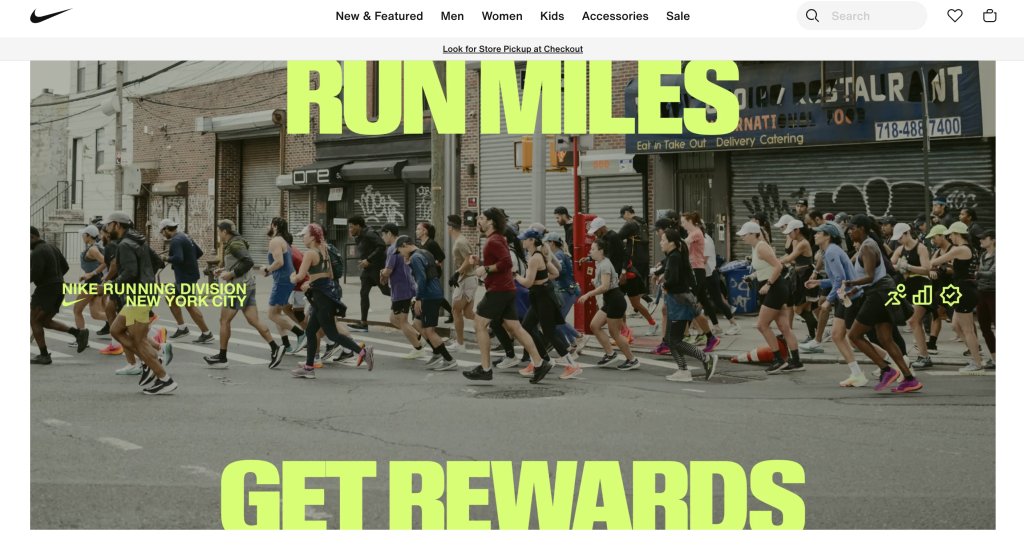
Additionally, the landing page features a section highlighting weekly running events in the city, accompanied by a social media widget displaying photos from previous meets. This not only enhances the brand’s image but also underscores its active involvement in serving the local community.
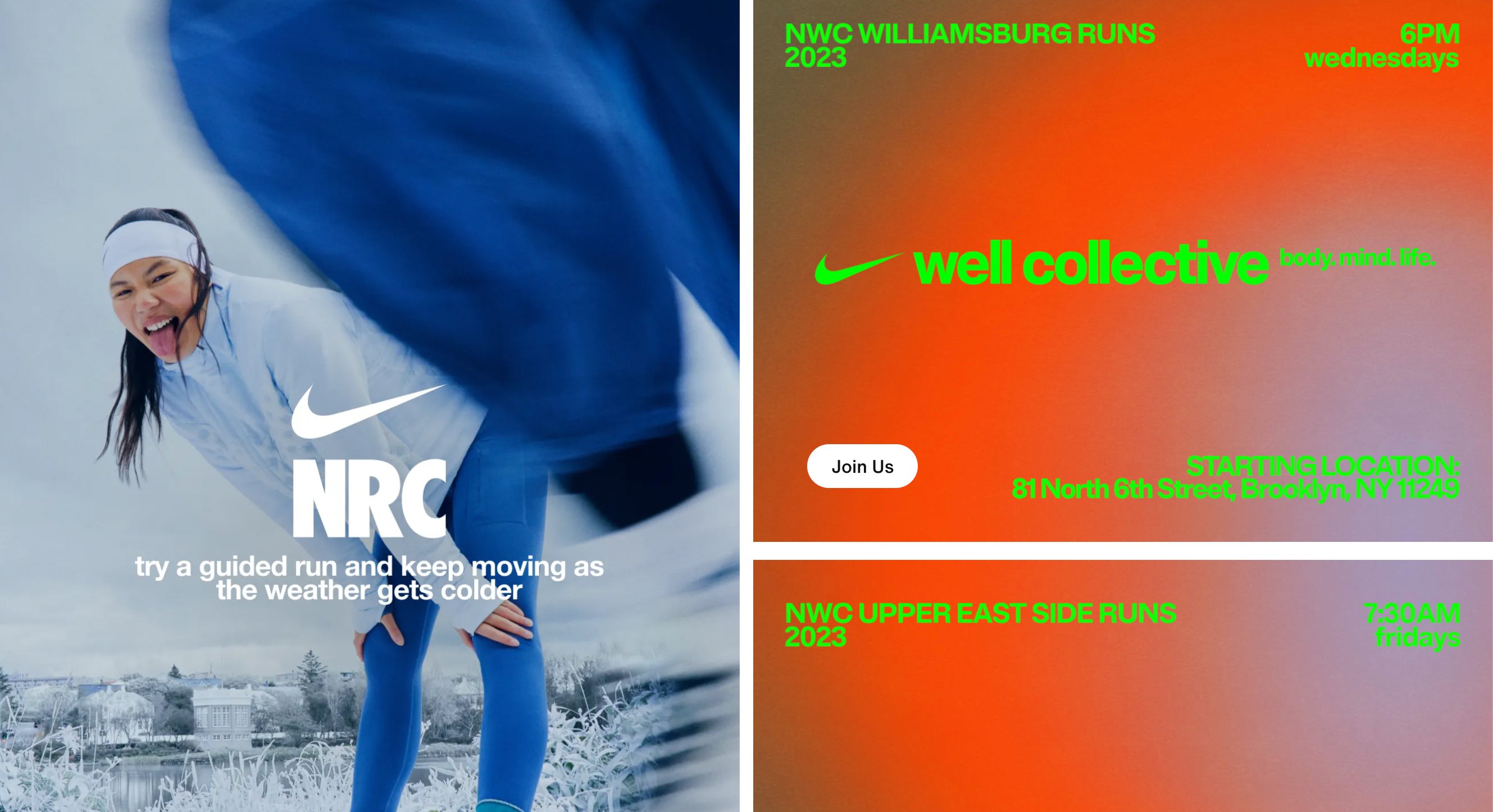
Towards the bottom of the page, there is a clear call-to-action (CTA) encouraging website visitors to locate Nike stores in New York. The CTA provides specific details about the types of products available in these stores, ensuring that potential customers have the information they need for an informed decision. This strategic placement aligns with local search intent, helping users seamlessly transition from online engagement to in-store visits.
Nike’s approach serves as a prime example of how attuning to local search intent elevates brand perception, fosters community engagement, and smoothly navigates potential customers from online interest to offline action. This comprehensive strategy positions businesses to thrive in the ever-evolving landscape of local search.
c. Monitor and test website experiences to improve local search experience
The website is optimized for local SEO and provides a tailored experience, successfully attracting traffic from both organic and paid searches; however, there’s more to be done. The next crucial step involves understanding how visitors from specific locations interact with the website through behavior analytics. Utilizing tools such as heatmaps, session recordings, form analysis, and surveys allows for a detailed examination of the reasons behind particular visitor behaviors.
To help you understand the scope of the behavior analysis, let’s delve into a hypothetical example. A company aimed to assess the engagement rate of its homepage, prompting the backend team to employ scrollmap tracking—a type of heatmap. This analysis aimed to understand how many visitors engaged with the page relative to its scroll depth. Here’s a snapshot of the scrollmap report from VWO:
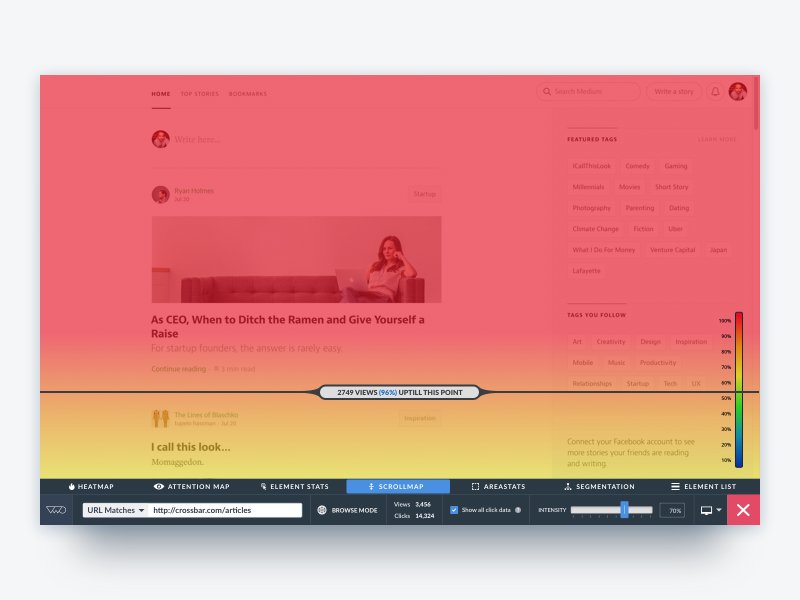
The report reveals a noteworthy observation: 96% of visitors drop off at the 50% scroll depth. This insight prompts the team to consider hypotheses for enhancing user engagement. For instance, if a crucial CTA is positioned just below this point, they might contemplate moving it upward on the page or incorporating an eye-catching element or widget to encourage users to continue scrolling.
Other tools, such as session recordings, provide insights into the mouse flow patterns of visitors. Form analytics offer a detailed report on user pain points during form submissions, while surveys enable direct feedback from visitors.
These tools collectively provide a qualitative report on users’ experiences. Leveraging this information, you can create new and improved experiences or experiments (A/B test, Split test, Multivariate test) with innovative features to enhance overall user satisfaction.
Now, let’s delve into another hypothetical scenario. Imagine a brand with multiple coffee shops in different cities, aiming to generate leads for its upcoming coffee festival in New York and New Orleans. Take a look at the registration page:
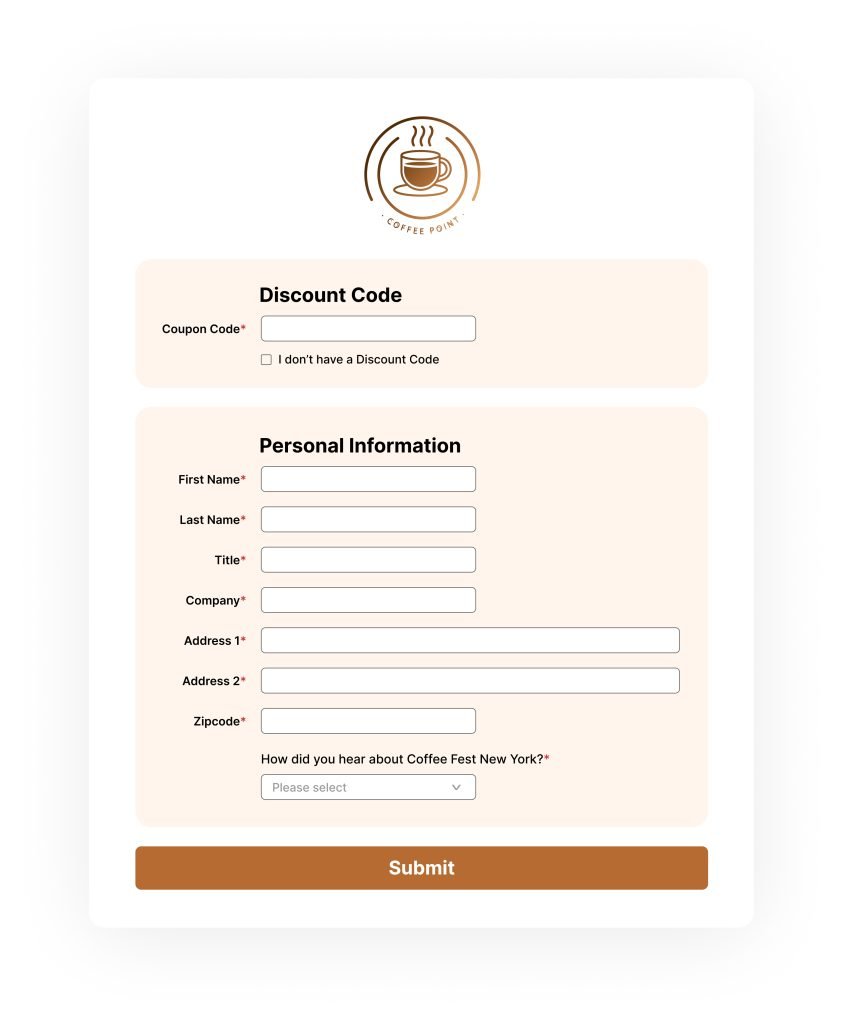
Suppose the form analysis reports indicate hesitations at the address fields, and the scrollmap report aligns with most visitors leaving the page at the address field.
In response, the marketing team can hypothesize that users might be abandoning the registration form due to privacy concerns about sharing their addresses. To test this hypothesis, the team decides to run an A/B test with a variation that removes the address fields, anticipating an uplift in the form conversion rates.
It’s important to note that this is a one-time optimization. For sustained improvement in website experience and alignment with visitor expectations, periodic behavior analysis becomes crucial. For such, long-term optimization strategies, such as an experimentation loop, can prove invaluable. (You can dive deeper into the concept of an experimentation loop in our dedicated blog post to know more.)
Having explored strategies from the search results page to landing page experiences, let’s now examine how VWO can significantly contribute to the success of your local search optimization campaign.
Using VWO for local search optimization
VWO is an all-encompassing experimentation platform designed to enhance the entire digital touchpoint experience. When it comes to local search optimization, VWO Insights proves invaluable by providing robust behavior analytics features such as heatmaps, form analytics, session recordings, and surveys.
If your website attracts visitors from various cities and you specifically aim to optimize the experience for a particular city, VWO has you covered. The platform offers a segmentation option for both VWO heatmap and VWO session recordings. By selecting the desired city through the custom segment option, you can effortlessly generate targeted reports and insights.
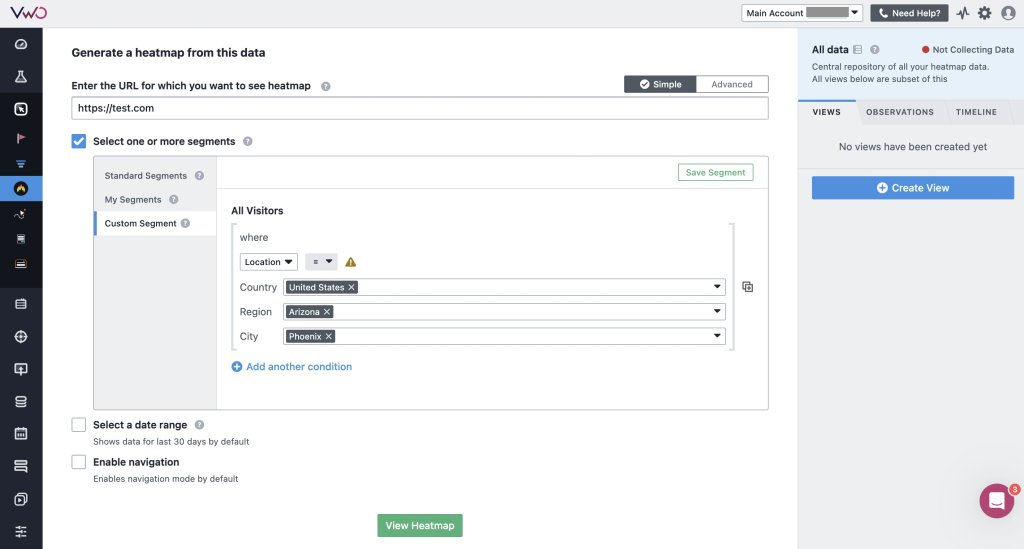
As you navigate through the reports, you can make a note of your observations on the right side of the dashboard, leveraging them for hypothesis creation in preparation for an A/B test.
Now, the question arises: Can VWO facilitate A/B testing and rollout new experiences directly from the same dashboard and specifically for the chosen city? The answer is a resounding yes.
Building upon the insights gleaned from behavior analytics, you can execute an A/B test using VWO Testing, tailored for the selected city with the help of the pre-segmentation feature. Within the test setup section, under “Audience and Traffic,” you can designate the city for your A/B test. This precise targeting ensures that you optimize the experience for locals in that specific area without impacting users from other locations.
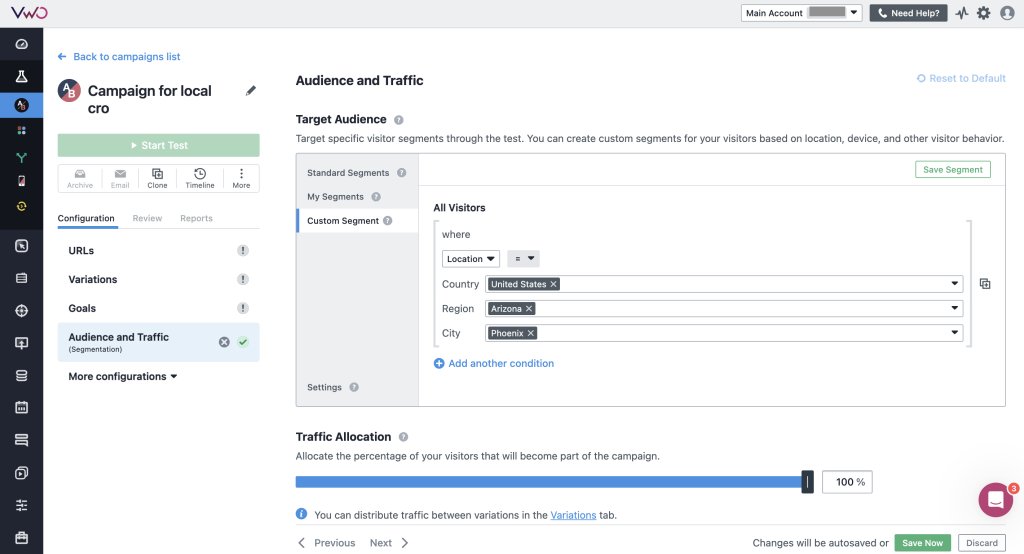
To deploy a new experience, VWO offers VWO Web Rollouts. Where you can just create your new experience with an intuitive visual editor and deploy it for your location via the custom segments. Here is a quick overview of VWO Web Rollouts:
Isn’t local search CRO a breeze with these features? The amazing part is that you can test it out for free, gaining firsthand experience of how seamlessly it aligns with your distinct business goals and website requirements. If you’re intrigued, here’s your opportunity to seize a 30-day free trial.
Conclusion
Local search conversion rate optimization proves to be a crucial strategy for businesses with physical stores in the post-COVID landscape. By gaining a comprehensive understanding of the customer journey and identifying conversion bottlenecks in digital marketing strategy, businesses can effortlessly convert potential customers into satisfied patrons. CRO campaigns for local search not only result in increased sales but also fortify customer loyalty, positioning local businesses for sustained success in the competitive local market.











